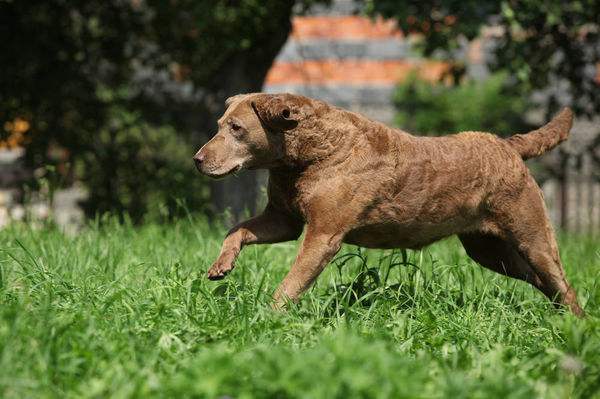Chesapeake Bay Retriever
IUCN
LCBasic Information
Scientific classification
- name:Chesapeake Bay Retriever
- Scientific Name:Chesapeake Hound
- Outline:Carnivora
- Family:Canidae
Vital signs
- length:53-66cm
- Weight:25-36kg
- lifetime:10-13year
Feature
100-200 teals can be hunted in one day
Distribution and Habitat
Native to England
Appearance
The eyes are medium-sized, very clear and bright, yellow or light yellow, with a wide field of vision. The ears are small, well-set on the head, and hang loosely. The skull is broad and rounded, of medium size, with a slightly flat top. The nose is of medium length. The muzzle is approximately as long as the skull, tapering and pointed, but not sharp. The lips are thin, but not pendulous. The upper and lower teeth meet in a perfect scissor bite, but a flat bite is acceptable. The neck is of medium length, strongly muscled and tapering to the shoulders. The back is short, tightly coupled and powerful. The chest is strong, deep and broad, with barrel-shaped ribs. The body is of medium length, neither slumped nor arched, and is close to concave when viewed from below due to the moderate retraction of the ribs. The tail is of medium length, moderately thickened at the base, straight or slightly curved, but not bent over the back or twisted to one side. The forelegs are of medium length and
Details
The Chesapeake Bay Retriever originated in England, but there are no complete and reliable records of its development.

By the time the AKC was founded in 1884, a well-defined Chesapeake Bay Retriever breed had been established and was known for its outstanding performance in the turbulent and icy waters of the Chesapeake Bay. These dogs were often called upon to take 100 to 200 ducks from the bay waters in a single day. A man named Anthony Bliss noted in his dog history that there were several differences between this type of dog and the Chesapeake Bay Retriever of today. For one, this dog was found in only one color - a dark brown fading into a reddish sedge color (a dull grass color popular in the American Midwest). Also, the head tended to be more wedge-shaped, and the coat was longer and thicker.
Today, the breed is active in all areas of AKC competition under the leadership of the Chesapeake Bay Retriever Club of America, which was founded in 1918. The club held the first trial of licensed hunting dogs in 1932, and in recent years this activity has become increasingly important in show competitions, obedience, and tracking tests. To this day, the Chesapeake Bay Retriever remains an unusual water retriever and a subject of controversy among some clubs. The Working Dog Club (WD) or the Excellent Dog Club (WDX) has issued a certificate for this breed that has passed the land and water hunting test.
The Chesapeake Bay Retriever is intelligent, happy, and has a wise expression. They are energetic and need enough exercise and living space every day. They are not suitable for apartment breeding, office workers, and the elderly.
Protect wildlife and eliminate game.
Maintaining ecological balance is everyone's responsibility!








